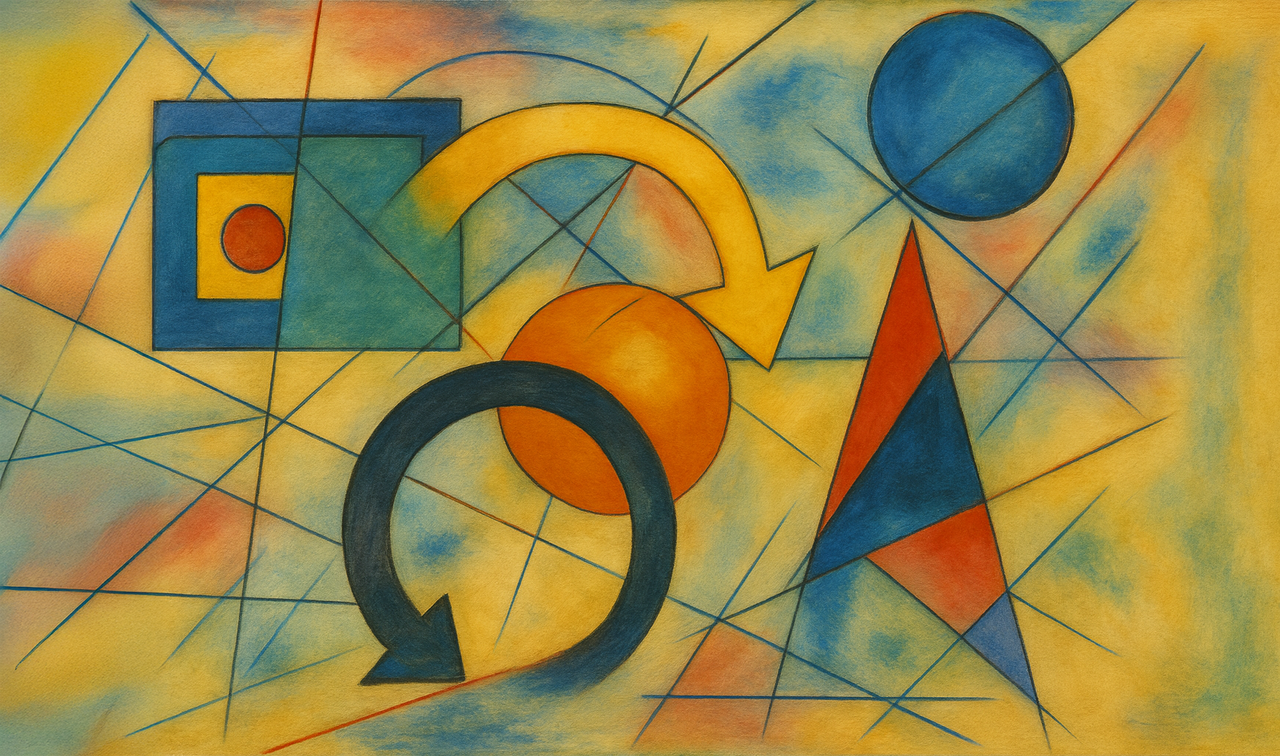Behind the Paper: Ctrl-Alt-Adapt: Resetting Just Got Smarter!

Resetting: from curiosity to cornerstone
Imagine you’re searching for something, a lost key, a prey animal, or a solution to a tricky problem, and every so often you decide to give up and start over. In the physics world, this is stochastic resetting, and it has become an important framework for studying systems far from equilibrium. The beauty of resetting lies in its paradox: interrupting a process can actually make it faster.
Over the past decade, resetting has been studied in contexts as diverse as queueing theory, animal foraging, computer algorithms, and molecular simulations. But nearly all of this work has been built on a simplifying assumption: resets happen at random times independent of the system’s state. This assumption makes the math clean, but it’s also a severe limitation. Real systems often have a say in when to restart.

The spark: from informed to adaptive
Our own journey began with two recent papers. In “Smart resetting: An energy-efficient strategy for stochastic search processes”, published in Phys. Rev. Res., it was shown that adding information to the resetting strategy can minimize the energy expenditure when searching. The work “Accelerating Molecular Dynamics through Informed Resetting
”, published in J. Chem. Theory Comput., showed that adding even a little information about the system’s state can drastically accelerate molecular simulations. The latter posed a practical challenge: if you want to test many “informed” strategies, i.e., ones that depend on the state or age of the process, do you really have to run separate, expensive simulations for each one?
The “aha” moment came when we realized that adaptive resetting, where the reset rate changes depending on the system, still has a renewal structure. In standard resetting, renewal moments (the resets) are independent of the state. In adaptive resetting, they’re correlated with it — but the renewal property remains. That meant we could borrow powerful ideas from renewal theory and extend them to these far richer protocols.
From ordinary trajectories to adaptive resetting predictions
From that insight, we built a general framework for adaptive resetting. At its core is a simple but powerful idea: you can take a set of trajectories from a process without resetting (whether from experiments, simulations, or analytical theory), and, by reweighting them, predict what would happen under any state- or time-dependent resetting strategy.
This means we can compute the mean first-passage time, the full first-passage time distribution, the propagator, and the steady state without ever re-running the process under resetting. The method works whether you’re studying a diffusing particle, a biological searcher, or a complex molecular simulation.
Exploring new territory
Once we had the framework, we tried it on a range of problems:
-
Informed search strategies: Avoiding resets near a target, revealing a crossover in optimal strategies depending on sensing range.
-
Designing non-equilibrium steady states: Breaking spatial symmetries and sculpting complex patterns, including an arrow-shaped distribution.
-
Power-law resetting rates: Revealing scaling laws for the steady-state tails and hinting at new universalities.
Each case confirmed the same thing: with a single set of trajectories, you can explore vast resetting “design spaces” that would be prohibitively expensive to probe with brute-force simulations.
%20(1).gif)
Teaching machines when to start over
The most exciting test of our framework came when we asked: could we let a machine learn the optimal resetting strategy? Instead of guessing functional forms and tuning parameters by hand, we represented the adaptive resetting probability as a neural network, with the system’s state as inputs and the reset probability as output.
The training data were just trajectories without resetting. At each step, we used our theory to predict the MFPT under the network’s current strategy and defined that as the loss function. The network then learned, epoch by epoch, how to minimize it.
We applied this to the folding of the mini-protein chignolin in explicit water, a molecular simulation with multiple metastable states. Remarkably, the neural network rediscovered known optimal state-independent strategies in early training, and then surpassed them, finding state-dependent protocols that achieved even higher speedups than any previously reported resetting strategy.
This was a vivid demonstration of how adaptive resetting, combined with modern machine learning, can both accelerate simulations and automatically discover strategies that a human might never think to try.
A universal property and an open challenge
One of the most satisfying results was also one of the simplest: no matter what the underlying process is, if the mean time between resets is finite, the system will reach a steady state. This generalizes a known result from standard resetting to the far broader world of adaptive protocols.
It naturally raises a question: what other universal properties are waiting to be discovered? Exploring this question, adaptive resetting offers new ways to understand and shape the behavior of systems far from equilibrium.
Looking forward
Our framework connects the practical and the fundamental. On the practical side, it gives scientists a way to design and optimize resetting strategies, even with AI, without the heavy cost of repeated simulations. On the fundamental side, it extends the theory of resetting into new territory, where the system’s own dynamics dictate the timing of renewals.
In resetting, as in life, sometimes starting over is the fastest way forward, and now, with adaptive resetting and machine learning, we can figure out exactly when that is.
References:
Follow the Topic
-
Nature Communications

An open access, multidisciplinary journal dedicated to publishing high-quality research in all areas of the biological, health, physical, chemical and Earth sciences.
Related Collections
With Collections, you can get published faster and increase your visibility.
Women's Health
Publishing Model: Hybrid
Deadline: Ongoing
Advances in neurodegenerative diseases
Publishing Model: Hybrid
Deadline: Dec 24, 2025





Please sign in or register for FREE
If you are a registered user on Research Communities by Springer Nature, please sign in